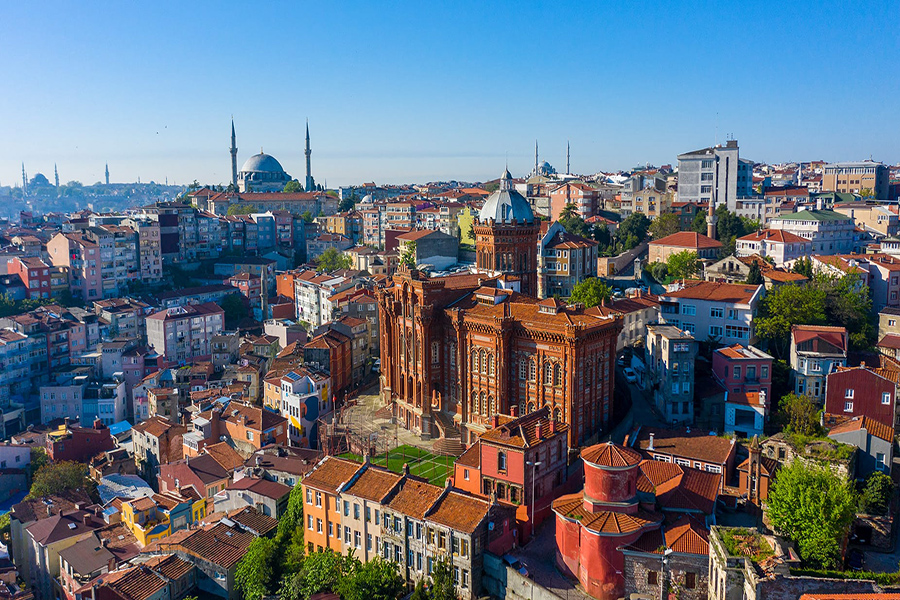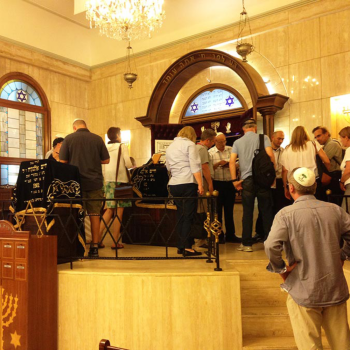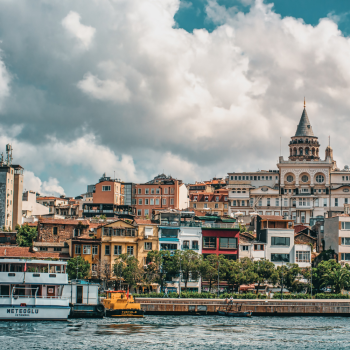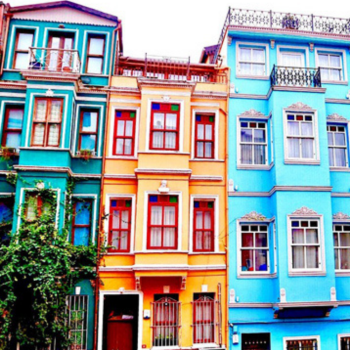Ottoman eras can be credited with the great number of monuments that dot this now bustling working-class conglomeration of diverse and authentic (and yes, some fundamentalist) neighborhoods. From north to south beginning at the Golden Horn are the twin quarters of Balat and Fener, Ottoman-era enclaves where Armenian, Greek, and Jewish immigrants first settled. This combined quarter is thick with the crumbling remains of monumental Byzantine palaces, synagogues, schools, and mosques and is even the home of the Eastern Orthodox Patriarchate. Several of the defunct Byzantine defensive gates continue to exert their influence on the surrounding neighborhoods that now bear these names: Edirnekapı, which is the gateway to the Church of Saint Savior in Chora or Kariye Camii; and Ayvansaray, which sits at the base of the Old Galata Bridge near the remains of the Blachernae Palace and sections of the land walls. To the west of Adnan Menderes Bulvarı is a neighborhood that has been in the news quite a bit of late. The conglomerate of mismatched, crumbling, and colorfully painted houses on and around Sulukule Caddesi earned its renown as the oldest Roma settlement in the world— scheduled for demolition and redevelopment. Perhaps the scheduled completion in advance of 2010 is a bit ambitious, leaving a tiny window of opportunity to see a bit of cultural history. Fatih’s southeastern-most point is the busy port of Yenikapı, departure point for sea buses to Bursa, the Marmara Islands, and the southern shores of the Marmara Sea. Yenikapı is the site of the construction of one of the metro stations for the inprogress Marmaray project, made famous by the extraordinary archaeological discoveries being made there. Following the southern Marmara Sea shoreline is the Sahil Yolu (or the coastal road); this main thoroughfare connects
the Old City with the airport and suburbs. The last neighborhood of interest as the road heads out of Fatih is Yedikule (literally, seven towers), the fortress constructed by Fatih Mehmet the Conqueror incorporating the earlier Theodosian land and sea walls. Almost no one goes to this neighborhood or museum, which is why you should go. Fewer and fewer places like this can be found in Istanbul these days. While they are not within the district boundaries laid out above, I need to mention a few additional neighborhoods in the district of Eyüp, which straddles the northern banks of the Golden Horn. West of the estuary and north of Fatih (above Fener and Balat) is the quarter of Eyüp Sultan, named for the Prophet Mohammad’s warrior companion and standardbearer, and one of the holiest figures in Islam. Tradition holds that Eyüp Sultan was slain in battle on this hill, and the site, marked by a mosque complex and tomb, is now a point of pilgrimage for Muslims. To the east of the Golden Horn (and still Eyüp) are the industrialized sections of Sütlüce and Hasköy (to name only two). Although the eastern shores of the Golden Horn are mostly occupied with shipbuilding, some venues stand out, such as the Rahmi Koç Museum and the restored Silahtaraga Power Plant, housing the Santral Istanbul galleries.
EUROPEAN SIDE : BEYOGLU , BEŞIKTAŞ & THE BOSPHORUS VILLAGES OF EUROP
If the Old City is the jewel of empires, then the landmass on the opposite side of the Golden Horn is its crown. The fairly unwieldy district of Beyoglu, which also straddles the centuries, is subdivided, at least colloquially, into a mosaic of characteristic quarters, with slightly more modern layers of historic, cultural, religious, and political reference than those on the other side of the Golden Horn. This triangle of Istanbul is connected to the Old City by the Galata




